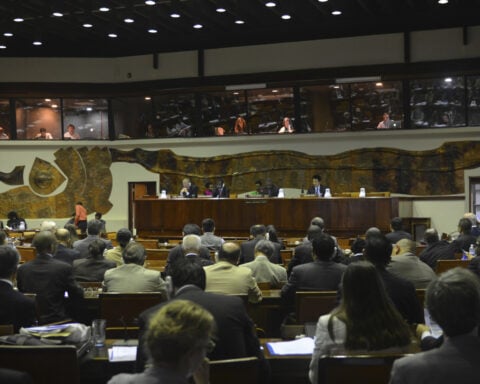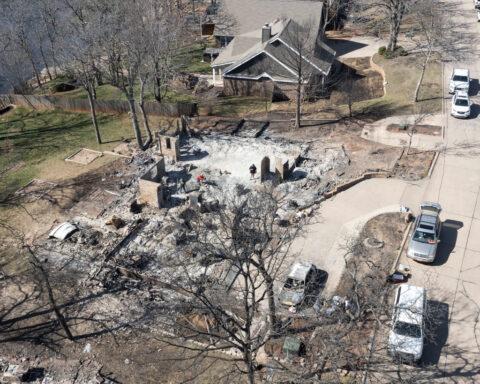By Nicole Jao
NEW YORK (Reuters) - California needs to triple its annual carbon emissions reductions to meet its 2030 target, a report by consulting firm Beacon Economics and San Francisco-based think tank Next 10 said on Thursday.
The state's greenhouse gas emissions increased in 2021 to 381.3 million metric tons, up 3.4% from a year earlier.
Transportation and power sector emissions spiked after COVID-19 pandemic lockdown restrictions lifted, according to the analysis, which is based on the latest estimates from California Air Resources Board.
WHY IT’S IMPORTANT
California is the largest economy in the U.S. but is not on track to meet its climate target despite aggressive decarbonization efforts.
CONTEXT
The state is aiming to slash emissions to 40% below 1990 levels by 2030. Its Public Utilities Commission has set a more ambitious target of reducing emissions from electricity to 46 million metric tons by 2030, 56% below 1990 levels.
KEY QUOTE
"California is an important state to study decarbonization because the state has a great deal of technology and wealth," said Stafford Nichols, research manager at Beacon Economics. "If California can’t decarbonize its economy then that does not bode well for less well-off economies," he said.
The state's high electricity costs could be holding back progress to electrify its transportation and power sectors, said F. Noel Perry, founder at Next 10.
"If you're a homeowner in California and you want to move to a heat pump and get rid of your gas, you're going to be thinking twice if the price of electricity is going to continue to go up," Perry said.
BY THE NUMBERS
California's emissions in 2021 were 11.5% below its 1990 baseline level.
The state needs to reduce emissions at a rate of 4.4% a year to meet its 2030 target, nearly triple the average annual rate of 1.6% over the most recent five-year period.
The transportation and electric power sectors had the largest increase in emissions in 2021, at 7.4% and 4.8%, respectively.
(Reporting by Nicole Jao in New York; Editing by Liz Hampton and Nia Williams)

 Trump has begun another trade war. Here's a timeline of how we got here
Trump has begun another trade war. Here's a timeline of how we got here
 Canada's leader laments lost friendship with US in town that sheltered stranded Americans after 9/11
Canada's leader laments lost friendship with US in town that sheltered stranded Americans after 9/11
 Chinese EV giant BYD's fourth-quarter profit leaps 73%
Chinese EV giant BYD's fourth-quarter profit leaps 73%
 You're an American in another land? Prepare to talk about the why and how of Trump 2.0
You're an American in another land? Prepare to talk about the why and how of Trump 2.0
 Chalk talk: Star power, top teams and No. 5 seeds headline the women's March Madness Sweet 16
Chalk talk: Star power, top teams and No. 5 seeds headline the women's March Madness Sweet 16
 Purdue returns to Sweet 16 with 76-62 win over McNeese in March Madness
Purdue returns to Sweet 16 with 76-62 win over McNeese in March Madness








